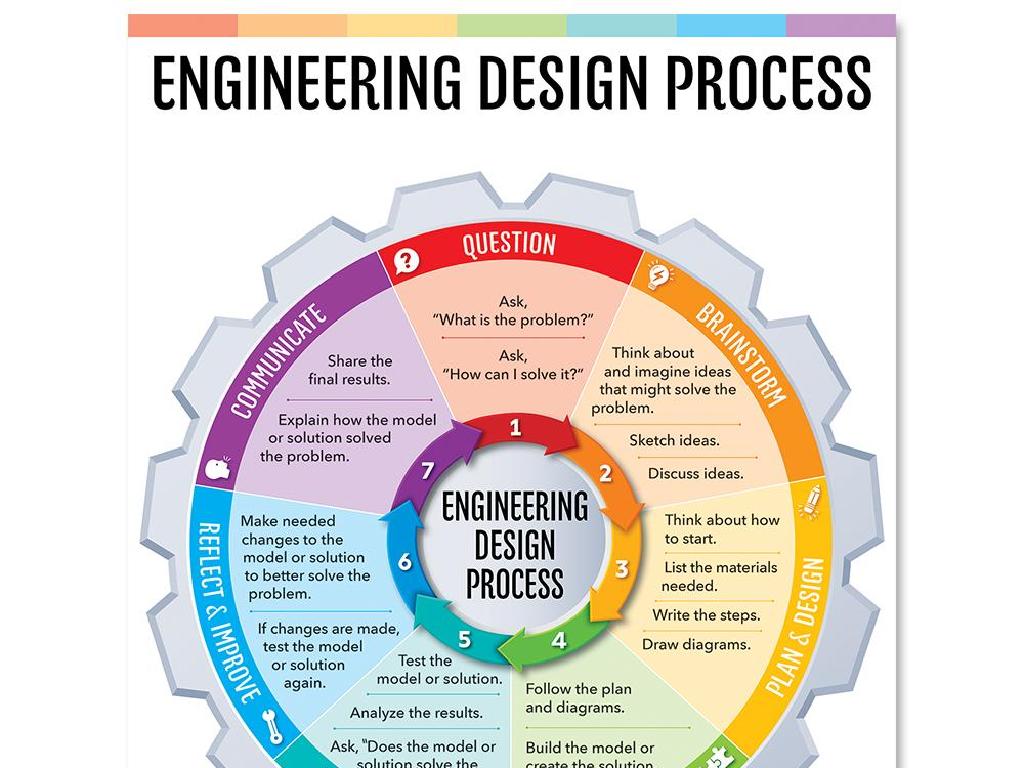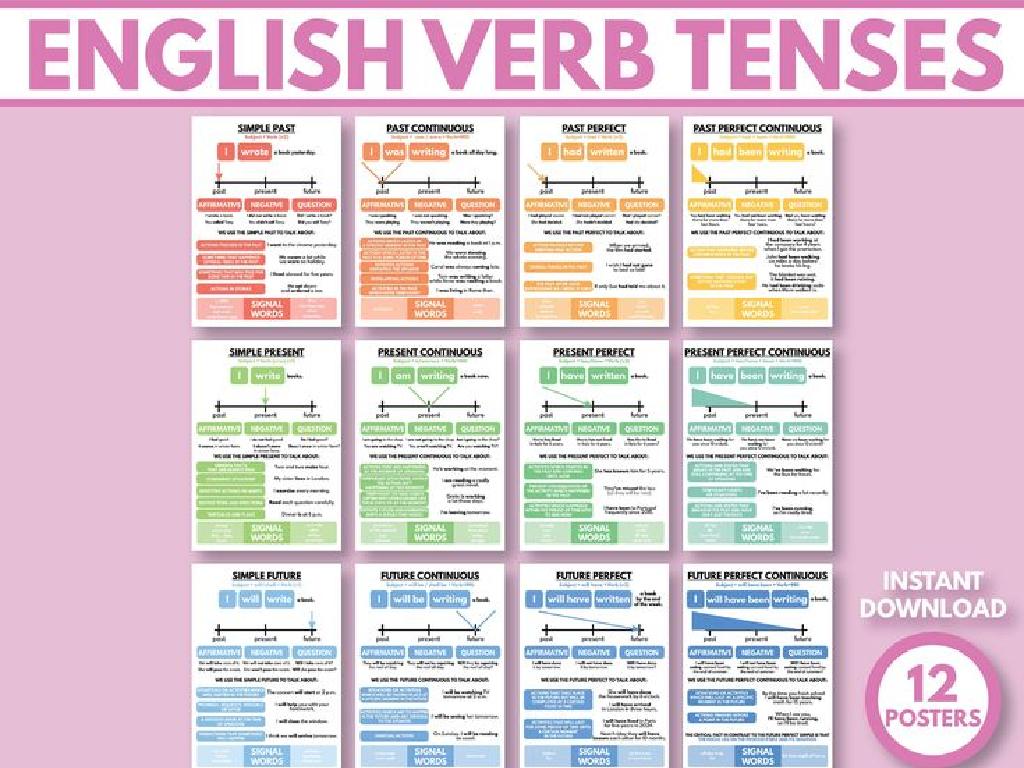Count Dots - Up To 5
Subject: Math
Grade: Pre-k
Topic: Counting To 5
Please LOG IN to download the presentation. Access is available to registered users only.
View More Content
Welcome to Counting!
– Greet our little counters
– Counting with our fingers
– Hold up your hands, let’s count each finger, one to five!
– Introduction to counting dots
– Dots are like tiny spots we can count
– Practice counting up to 5
– We’ll count dots together, starting from 1 up to 5
|
This slide is designed to introduce Pre-K students to the concept of counting in a fun and interactive way. Start the lesson with a warm greeting to make the children comfortable. Encourage them to participate by showing their fingers and counting along with you from one to five. This physical activity helps them associate the numbers with a quantity they can see and touch. Then, transition to counting dots, which are simple visual representations of numbers. Use clear and colorful dot illustrations to help them understand. Finish with a practice session where students count dots on different objects or pictures, ensuring they grasp the concept of counting up to five. The goal is to make counting feel like a game they enjoy.
Learning to Count: 1 to 5
– What is counting?
– Counting tells us how many items are present.
– Counting things we see
– We can count items like toys or fingers.
– Let’s count: 1, 2, 3, 4, 5
– Starting with 1, we count up to 5 in order.
– Practice counting with dots
– Use dot cards to count up to 5 dots.
|
This slide introduces the concept of counting to Pre-K students. Begin by explaining that counting is a way to determine the quantity of items. Use familiar objects like toys or fingers to illustrate this concept. Guide the students through counting from 1 to 5, ensuring they understand the sequence. Provide dot cards with 1 to 5 dots and encourage the children to count the dots aloud. This activity helps to reinforce their understanding of numbers and counting. The goal is to make them comfortable with counting up to 5 in a fun and interactive way.
Counting Dots: Number 1
– Recognize the single dot
– Say ‘one’ for one thing
– When there’s only one item, we use the number ‘one’
– Practice saying ‘one’ together
– We’ll repeat ‘one’ every time we see a single dot
– Understanding ‘one’ as a number
|
This slide introduces the concept of the number ‘one’ to Pre-K students. It’s crucial to start with the very basics, ensuring that the children can recognize and associate the number with a single object. Show them a single dot and encourage them to say ‘one’ out loud each time they see it. This repetition reinforces their understanding of ‘one’ as a number and its association with a single item. Make the activity interactive by asking them to point out one of various objects in the classroom or at home. The goal is to make them comfortable with recognizing and saying the number ‘one’ in different contexts.
Counting Dots: Number 2
– Two dots on the board
– Counting together: 1, 2
– ‘Two’ means a pair
– Like two eyes, two shoes!
– Find two items in class
– Maybe two crayons or two blocks?
|
This slide is focused on helping Pre-K students recognize and count to the number two using visual dots as a representation. Start by showing them two dots and count aloud together, emphasizing each number. Explain that the number ‘two’ represents a pair of items, which can be anything that comes in twos. Encourage the children to look around the classroom and find pairs of objects to reinforce the concept. This activity will help them associate the number with actual quantities and improve their counting skills. It’s also a fun way for them to interact with their environment and practice counting with tangible items.
Counting Dots: Number 3
– Spotting three dots together
– Counting out loud: 1, 2, 3
– Three dots represent the number 3
– The number ‘three’ is shown by three dots
– Clap hands three times for counting
– Clapping helps us remember the number 3
|
This slide is focused on helping Pre-K students recognize and count to the number three using visual dots. Start by showing them three dots and encourage them to count along with you out loud. Reinforce the concept that the three dots they see correspond to the number ‘three’. To make the learning experience interactive, involve a physical activity such as clapping hands three times. This kinesthetic approach helps young learners to associate the number with an action, aiding in memory retention. During the next class, you can review this concept and ask students to point out groups of three objects in the classroom or at home.
Counting Dots: Number 4
– Here are four dots
– Count with me: 1, 2, 3, 4
– Four dots mean ‘four’
– Touch your nose four times
– Practice counting with fun actions
|
This slide is designed to teach Pre-K students the concept of the number 4 through counting dots. Start by showing them four dots and count aloud, pointing to each dot as you go. Reinforce the concept that the quantity of dots represents the number ‘four’. Engage the students in a physical activity by asking them to touch their nose four times, which helps them associate the number with a physical count. During the activity, count along with them to provide guidance and make it a fun group activity. This interactive approach helps solidify their understanding of the number 4 through both visual and kinesthetic learning.
Counting Dots: Number 5
– Counting up to five dots
– Let’s count together: 1, 2, 3, 4, 5
– Five dots means five things
– Each dot represents one item
– Jump five times to count
– Physical activity helps us learn numbers
– Practice counting together
|
This slide is aimed at helping Pre-K students understand the concept of the number 5 through counting dots. Start by showing them five dots and count aloud together, pointing to each dot as you go. Explain that when we see five dots, it means there are five items. Incorporate a physical activity, like jumping, to reinforce the number 5 have the children jump up and down five times, counting each jump. This kinesthetic approach helps young learners to associate the number with an action, making it more memorable. Encourage the children to practice counting to five in different scenarios throughout the day to solidify their understanding.
Let’s Practice Counting!
– Look at pictures with dots
– Count each dot out loud
– Say ‘1, 2, 3, 4, 5’ as you point
– Point to each dot as you count
– Use your finger to touch each dot
– Show how you count to five
|
This slide is designed to engage Pre-K students in a counting activity that helps them practice counting to five using visual aids. Display pictures with different numbers of dots, up to five, and guide the students to count each dot aloud. Encourage them to point to each dot, which will help with their number recognition and one-to-one correspondence skills. Make sure to praise their efforts and correct gently if they make a mistake. For the activity, you can use dot cards, images with dots, or even stickers. Have a variety of pictures so that each child can have a turn, and consider using real objects like fruit or toys for tactile counting. This interactive approach will reinforce their counting skills and prepare them for more complex math concepts.
Class Activity: Dot Counting Fun!
– Receive a worksheet with dots
– Point and count each dot aloud
– Use your finger to touch each dot as you count
– Count up to 5 dots
– Make sure not to count any dot more than once
– Share your counting with the class
|
This activity is designed to help Pre-K students practice counting up to 5 using a fun and interactive worksheet. Distribute the worksheets with different numbers of dots, up to 5, to each student. Encourage them to use their finger to point at each dot and count out loud, which will help with number recognition and one-to-one correspondence. After counting, ask the students to share their results with the class to reinforce their counting skills. For variation, some students can have worksheets with fewer dots, and others with up to 5, to cater to different learning paces. This activity also helps in developing fine motor skills and verbal expression.






